-
 Bitcoin
Bitcoin $118600
-1.16% -
 Ethereum
Ethereum $3616
-2.94% -
 XRP
XRP $3.174
-10.23% -
 Tether USDt
Tether USDt $1.000
0.01% -
 BNB
BNB $773.4
-0.42% -
 Solana
Solana $189.3
-6.58% -
 USDC
USDC $1.000
0.02% -
 Dogecoin
Dogecoin $0.2406
-10.24% -
 TRON
TRON $0.3098
-1.24% -
 Cardano
Cardano $0.8139
-9.10% -
 Hyperliquid
Hyperliquid $44.01
-2.71% -
 Stellar
Stellar $0.4266
-9.64% -
 Sui
Sui $3.699
-7.29% -
 Chainlink
Chainlink $18.21
-6.60% -
 Hedera
Hedera $0.2465
-9.46% -
 Bitcoin Cash
Bitcoin Cash $512.3
-2.27% -
 Avalanche
Avalanche $24.03
-5.62% -
 Litecoin
Litecoin $112.2
-5.21% -
 UNUS SED LEO
UNUS SED LEO $8.964
-0.26% -
 Shiba Inu
Shiba Inu $0.00001386
-9.81% -
 Toncoin
Toncoin $3.188
-4.76% -
 Ethena USDe
Ethena USDe $1.001
-0.02% -
 Polkadot
Polkadot $4.135
-7.84% -
 Uniswap
Uniswap $10.16
-5.19% -
 Monero
Monero $310.5
-2.84% -
 Bitget Token
Bitget Token $4.702
-2.53% -
 Dai
Dai $0.0000
0.01% -
 Pepe
Pepe $0.00001270
-9.07% -
 Aave
Aave $290.7
-5.84% -
 Bittensor
Bittensor $424.7
-5.28%
Can I chase it when the volume suddenly breaks through the platform after a long period of sideways trading?
A sudden surge in trading volume after a crypto's sideways phase may signal a potential price breakout, but traders should analyze it alongside technical indicators to avoid false signals.
Jun 29, 2025 at 08:28 am
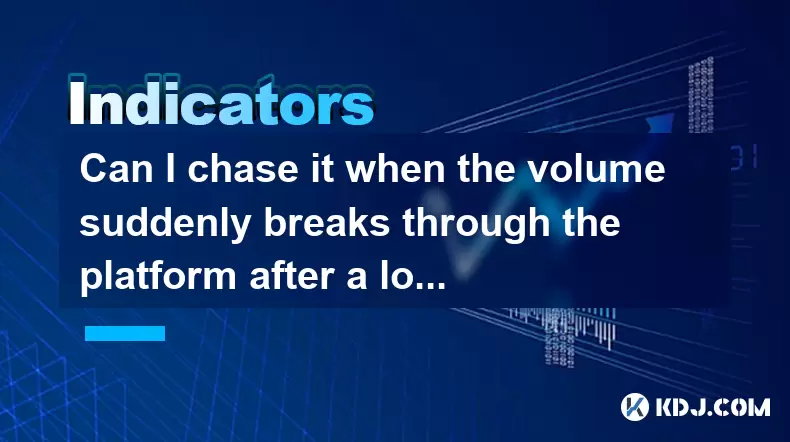
Understanding Volume Breakouts in Cryptocurrency Trading
In the world of cryptocurrency trading, sudden spikes in trading volume often catch the attention of traders and investors alike. When a cryptocurrency remains in a sideways consolidation phase for an extended period and then experiences a significant volume breakout, it can signal potential movement in price. However, chasing such moves without understanding the underlying dynamics can lead to poor decision-making.
A volume breakout typically indicates increased interest from market participants. It may suggest that either institutional players or large retail traders are entering or exiting positions. This surge in activity is often followed by a price breakout, but not always immediately. Traders need to assess whether the increase in volume aligns with other technical indicators before deciding to enter a position.
What Causes Volume to Spike After a Consolidation Phase?
After a long period of sideways movement, cryptocurrencies tend to form tight ranges where buyers and sellers balance each other out. During this time, volume remains low because there’s no strong directional bias. A sudden volume spike can occur due to several reasons:
- Market News or Events: Announcements related to regulation, adoption, or project updates can trigger renewed interest.
- Large Whale Movements: Big holders (commonly referred to as whales) moving significant amounts of coins can create volatility.
- Technical Breakouts: Price nearing key support or resistance levels might prompt automated systems or algorithmic traders to react.
- FOMO (Fear of Missing Out): Retail traders often jump in after seeing sudden movements, further fueling the momentum.
It's important to differentiate between organic volume increases and those driven by short-term hype. Organic volume usually sustains price action, while hype-driven volume may result in sharp but temporary moves.
How to Analyze Volume Patterns Before Chasing a Breakout
Before jumping into a trade based on a volume spike, it’s crucial to perform a structured analysis. Here are some steps to follow:
- Compare Current Volume to Average Volume: Use tools like TradingView or exchange-specific charts to compare current volume with its 20-day average. A sudden jump above this average could be significant.
- Check Price Action Relative to Key Levels: Is the volume spike occurring near a known support/resistance level? If so, it might indicate a potential breakout or breakdown.
- Use Volume Indicators: Tools like OBV (On-Balance Volume) or Volume Weighted Average Price (VWAP) can help confirm whether the volume is supporting a sustainable move.
- Watch for Divergences: If volume is rising but price isn’t responding accordingly, it might indicate weakness in the move.
- Monitor Order Books and Depth Charts: Real-time order books can show whether the volume is being absorbed by real liquidity or manipulated through wash trading.
These analytical techniques help filter out false breakouts and avoid chasing weak signals.
Risks Involved in Chasing a Volume Breakout
While a volume spike may appear promising, there are notable risks involved:
- False Breakouts: Many volume surges do not result in meaningful price changes. These are often referred to as fakeouts, where the market tests patience and traps inexperienced traders.
- Wash Trading: Some exchanges inflate volume numbers artificially, especially for lesser-known altcoins. This makes it difficult to distinguish genuine interest from manipulation.
- Liquidity Concerns: Sudden volume spikes may lack sufficient liquidity, making it hard to enter or exit positions at favorable prices.
- Emotional Trading: Chasing volume without a clear plan often leads to emotional decisions, which can amplify losses.
Traders should always set stop-loss orders and define their risk-reward ratios before entering any trade based on volume anomalies.
Best Practices for Entering a Trade After a Volume Surge
If you decide to participate in a volume breakout, here are some best practices to follow:
- Wait for Confirmation: Instead of entering immediately, wait for a candlestick close above or below key levels to confirm the breakout.
- Use Multiple Timeframes: Check both higher and lower timeframes (e.g., 1-hour vs 4-hour charts) to validate the strength of the move.
- Combine Volume with Other Indicators: Use moving averages, RSI, or MACD alongside volume to strengthen your conviction.
- Look for Follow-Through Volume: A breakout supported by continued high volume over multiple candles is more reliable than a single spike.
- Avoid Overleveraging: High volume doesn't guarantee profits, so never risk more than you're comfortable losing.
These strategies help ensure that you're not just reacting impulsively to volume but making informed decisions based on broader market context.
Frequently Asked Questions
Q1: How can I tell if a volume spike is legitimate or fake?
You can verify the legitimacy of a volume spike by checking the order book depth, comparing it across multiple exchanges, and using third-party analytics platforms like CoinGecko or CoinMarketCap that flag suspicious volume data.
Q2: Should I always trust volume when trading cryptocurrencies?
No, volume should never be used in isolation. Always combine it with price action, trendlines, and other technical indicators to make well-rounded trading decisions.
Q3: Can volume breakouts happen in bear markets too?
Yes, volume breakouts can occur in any market condition. In bear markets, they may signal capitulation or short squeezes rather than bullish reversals, so context matters.
Q4: Are all sideways consolidations followed by volume breakouts significant?
Not necessarily. Many consolidations end with a continuation of the existing trend or even a reversal without any substantial volume change. Each case needs individual assessment.
Disclaimer:info@kdj.com
The information provided is not trading advice. kdj.com does not assume any responsibility for any investments made based on the information provided in this article. Cryptocurrencies are highly volatile and it is highly recommended that you invest with caution after thorough research!
If you believe that the content used on this website infringes your copyright, please contact us immediately (info@kdj.com) and we will delete it promptly.
- Score Big This Season with the BetMGM Bonus Code: Your Ticket to MLB Bonus Bets!
- 2025-07-24 06:50:12
- Bitcoin: From Digital Gold Rush to Evolving Asset Class
- 2025-07-24 06:50:12
- Shiba Inu's $1 Dream: Major Hurdles and Community-Driven Hope
- 2025-07-24 06:30:13
- Ethereum, Altcoins, and BlockDAG: Navigating the Crypto Landscape
- 2025-07-24 06:30:13
- Dogecoin's Resistance Retest: Parabolic Move on the Horizon?
- 2025-07-24 04:50:13
- WLFI, Vaulta Token, and Holdings: Navigating the Web3 Revolution
- 2025-07-24 05:30:13
Related knowledge
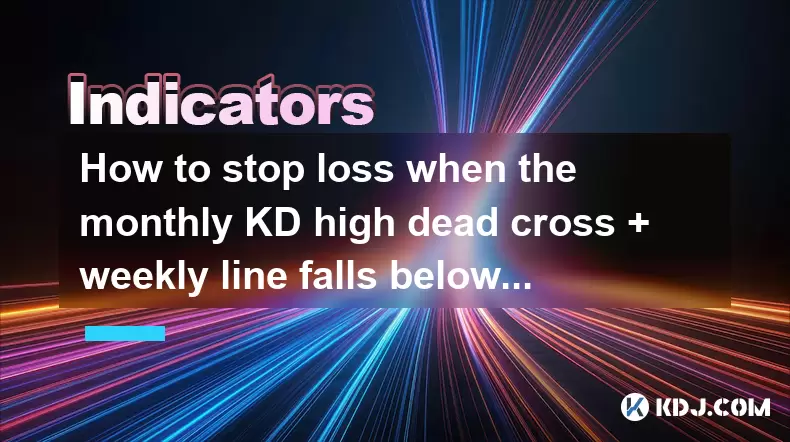
How to stop loss when the monthly KD high dead cross + weekly line falls below the 20-week line + daily line pulls back on the 5-day line?
Jul 24,2025 at 07:00am
Understanding the Indicators: KD, Weekly, and Daily Moving AveragesWhen traders analyze cryptocurrency price movements, they often rely on technical i...
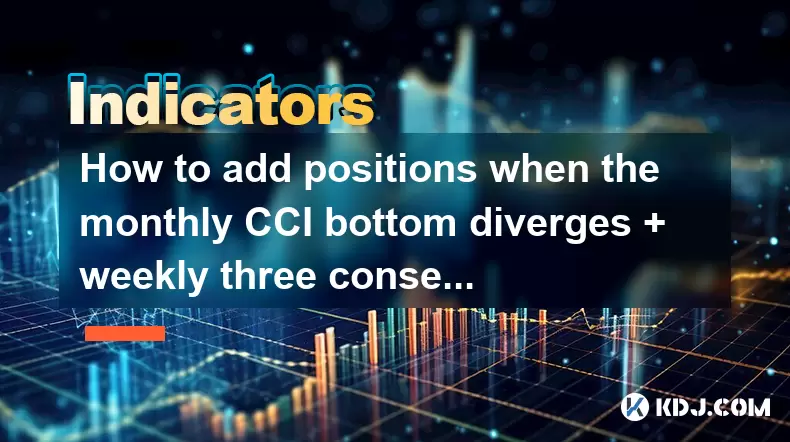
How to add positions when the monthly CCI bottom diverges + weekly three consecutive Yang + daily line gap is not filled?
Jul 24,2025 at 05:22am
Understanding the Monthly CCI Bottom DivergenceWhen analyzing the monthly CCI bottom divergence, traders are identifying a potential reversal signal i...
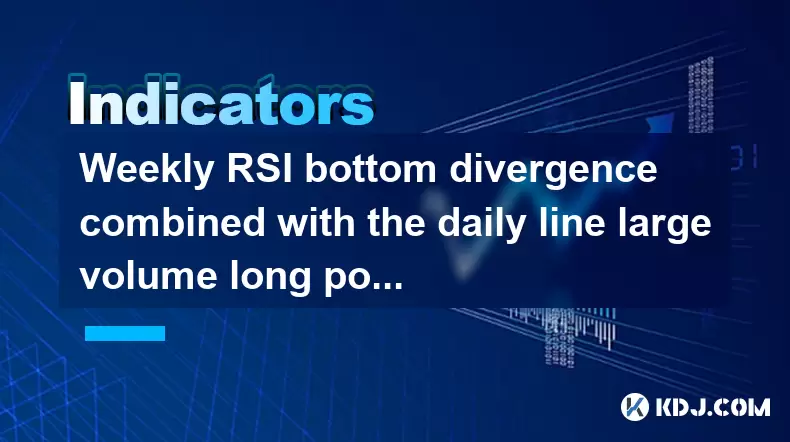
Weekly RSI bottom divergence combined with the daily line large volume long positive start signal
Jul 24,2025 at 05:28am
Understanding RSI Bottom Divergence in Cryptocurrency TradingIn the context of cryptocurrency trading, RSI bottom divergence is a powerful technical s...
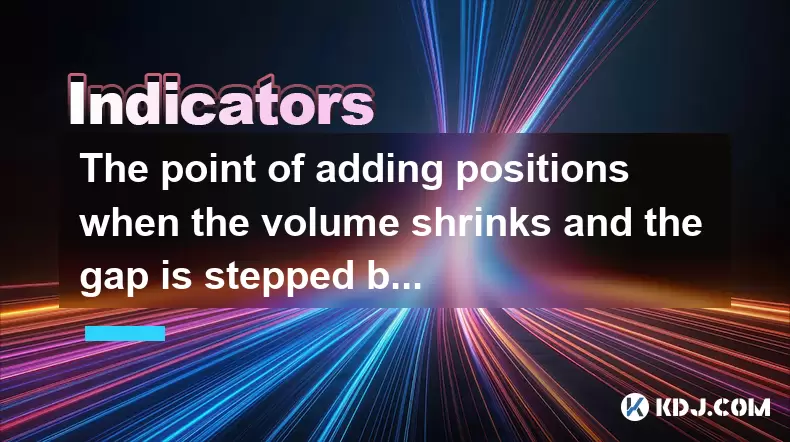
The point of adding positions when the volume shrinks and the gap is stepped back after the gap is jumped
Jul 24,2025 at 04:56am
Understanding the Gap Jump Phenomenon in Cryptocurrency TradingIn cryptocurrency trading, a gap jump occurs when the price of a digital asset opens si...
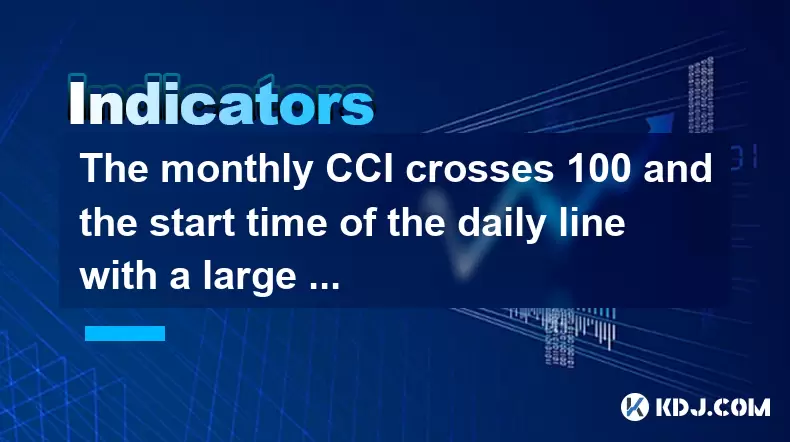
The monthly CCI crosses 100 and the start time of the daily line with a large volume positive line
Jul 24,2025 at 03:56am
Understanding the Monthly CCI Indicator and Its Significance at 100The Commodity Channel Index (CCI) is a momentum-based oscillator used to identify o...
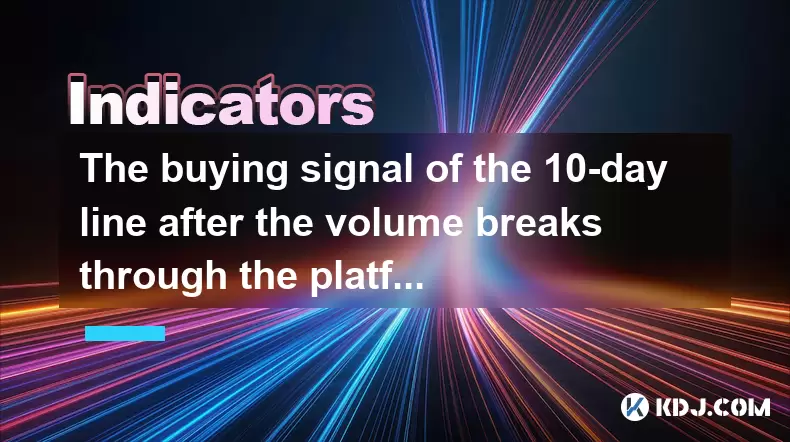
The buying signal of the 10-day line after the volume breaks through the platform
Jul 24,2025 at 06:00am
Understanding the 10-Day Moving Average in Cryptocurrency TradingIn cryptocurrency trading, moving averages are essential tools for identifying trends...

How to stop loss when the monthly KD high dead cross + weekly line falls below the 20-week line + daily line pulls back on the 5-day line?
Jul 24,2025 at 07:00am
Understanding the Indicators: KD, Weekly, and Daily Moving AveragesWhen traders analyze cryptocurrency price movements, they often rely on technical i...

How to add positions when the monthly CCI bottom diverges + weekly three consecutive Yang + daily line gap is not filled?
Jul 24,2025 at 05:22am
Understanding the Monthly CCI Bottom DivergenceWhen analyzing the monthly CCI bottom divergence, traders are identifying a potential reversal signal i...

Weekly RSI bottom divergence combined with the daily line large volume long positive start signal
Jul 24,2025 at 05:28am
Understanding RSI Bottom Divergence in Cryptocurrency TradingIn the context of cryptocurrency trading, RSI bottom divergence is a powerful technical s...

The point of adding positions when the volume shrinks and the gap is stepped back after the gap is jumped
Jul 24,2025 at 04:56am
Understanding the Gap Jump Phenomenon in Cryptocurrency TradingIn cryptocurrency trading, a gap jump occurs when the price of a digital asset opens si...

The monthly CCI crosses 100 and the start time of the daily line with a large volume positive line
Jul 24,2025 at 03:56am
Understanding the Monthly CCI Indicator and Its Significance at 100The Commodity Channel Index (CCI) is a momentum-based oscillator used to identify o...

The buying signal of the 10-day line after the volume breaks through the platform
Jul 24,2025 at 06:00am
Understanding the 10-Day Moving Average in Cryptocurrency TradingIn cryptocurrency trading, moving averages are essential tools for identifying trends...
See all articles

























































































